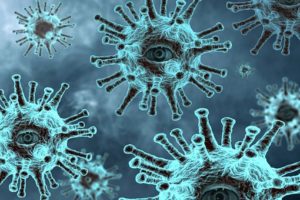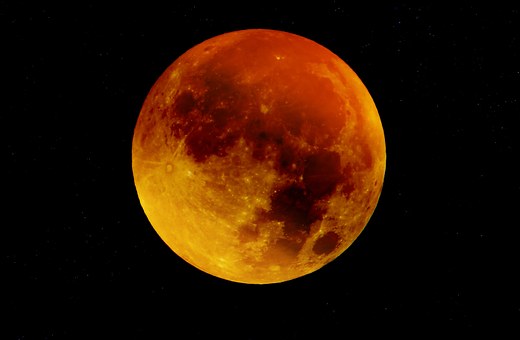The vaccine that will finally defeat the coronavirus is coming soon
There is a message circulating on social media on the 1st anniversary of the coronavirus. It was a year back that the first patient of coronavirus appeared in the city of Wuhan in China. Ever since the world has been eagerly waiting for a vaccine. A vaccine that will bring a respite to humanity from the deadly virus.

The good news is not far away. A lot of pharmaceutical companies have announced the successful trial of the vaccine in the 3rd phase. The vaccine will come in a small glass vial. You will have to roll your sleeves upwards and get ready for a cool effect of an alcohol swipe before getting pricked by an injection needle. The process will be repeated after 3 weeks. The vaccine vial will carry the superpower just like a Marvel comics superhero. One that will defeat one of the biggest villains of humanity, the coronavirus.
Vaccines take long but this one is coming fast

On November 9th, Pfizer and BioNTech, two firms working as partners have announced the successful trial of the vaccine that appears 90% effective. Vaccines in the past have taken years to be declared successful. The polio vaccine was launched in 1955. It had to wait for 20 long years before getting clearance from the American authorities. Isolating the measles virus in 1954 took 9 long years before it got approval. The medical fraternity comprising of researchers and doctors need to be congratulated. After all the vaccine is coming in less than a year.
The vaccine players

More than 100 vaccines are in development out of which 10 are in the last stage of development with phase-3 trials running. Just a couple of days back Moderna, an American Biotech firm has also announced a vaccine that is 94% effective. AstraZeneca in collaboration with Oxford University is also in the final stages and hopefully would be ready with a vaccine by this year end.
The vaccine from AstraZeneca is the most promising for India as it has a tie-up with the Serum Institute of India in Pune. On the other hand, Bharat Biotech’s Covaxin is in phase-3 trial. The Russian Sputnik V will soon start the phase-3 trials in India. Cadila and Biological E are two other firms in India that are in phase-2 of trial.
How does the vaccine work?

This is the tricky part to explain but I will try my best to explain in a simple language. Most of the vaccines are based on the technology of introducing a weakened strain of the virus in the human body. In few cases, normal virus particles were inactivated so that they don’t multiply in the body The Immune system of the body recognises the foreign body and attacks it by producing a lot of antibodies. As a result, a person after immunization by the vaccine can resist the disease.
The mRNA vaccine
Earlier in January, the scientists successfully published the genetic material of SARS-COV-2, the virus that causes covid-19. The vaccine researchers could identify the gene responsible for the spike protein with which the virus membrane is studded. It’s these spikes that get attached to the human cell and infect them.

Most of the vaccines that are currently in phase-3 trials are based on the mRNA (Messenger RNA) technology. In the current technology instead of weakened strain of the covid virus, sequences of genetic material called mRNA are injected into the body. It is done in form of tiny capsules made of lipids. The mRNA is a synthetic genetic material that provides the human cell with recipes to make proteins. Once immunized, the body cells churn out copies of the coronavirus spike protein that alerts the immune system and stimulates it to attack the real virus.
The Pfizer and Moderna vaccines are based on mRNA technology. AstraZeneca and J&J vaccines are slightly different. They use a version of the spike gene that piggy rides on a harmless adenovirus found in monkeys. The resultant virus infects the human cells and makes them produce spike proteins. This attracts the attention of the human immune system
The road ahead for the vaccine

The Pfizer vaccine is 90% effective while the Moderna vaccine is 94.5% effective. It means these vaccines will be as effective as the ones for measles. None of the companies have reported any safety issues with the trial. They both are seeking emergency authorization from the US Food and Drug Administration (FDA).
The US has placed advance orders for 100 million doses from both the companies. On the other hand, Pfizer has also agreed to supply the European Union with 300 million doses besides Canada and, UK and Japan.
The Challenges for the vaccine
The Pfizer vaccine has to be stored at -70*C and this will be a big challenge. It has a shelf life of 5 days at refrigerator temperature. On the other hand, the Moderna vaccine can be stored at -20*C with a shelf life of 30 days at refrigerator temperature. Both vaccines have to be taken in 2 doses, the Pfizer one at 3 weeks gap and the Moderna one at 4 weeks gap.

India doesn’t have a deal with Pfizer and Moderna so getting supplies from them will be a big challenge. India also lacks a cold chain storage chain and storing a vaccine at -70*C will be a big headache. The Pfizer vaccine is more suited to Western countries that have a cold climate. The Moderna vaccine can be stored at -20*C and therefore can be stored in commercial deep freezers.
Most other vaccines in the pipeline only require refrigeration not freezing temperatures.
When do you get inoculated?
In a country like India getting 130 crore population inoculated will be a huge challenge. The inoculation will start with the healthcare and frontline workers that will be followed by people in high-risk groups in the 50+ age groups.

In a scenario where the vaccine can only be produced in limited quantity the rich countries will try to hijack the initial lot. The poor countries may get left out in the race. The answer to this challenge is COVAX, an initiative to encourage countries equal access to supplies. Even domestically governments will have to create national committees to oversee a fair distribution all across the country.
The patience is wearing out but the vaccine has given a hope. Lets pray that the vaccine will be available to every human being across the planet.
Acknowledgment:
The Economist issue dated 14th Nov 2020 titled “Suddenly Hope”
The Times of India, New Delhi dated 18th Nov 2020
You can read more such stories on my blog. Click on the following link:
The Future of Flying: Now boarding from Gate of Innovation
The Internet of Things: Controlling your home from your phone












Comments
4 Comments
Thoroughly researched write up!!
All technicalities are simply explained for a lay man to get a grasp about this vaccine.
Thanks Àrchana
Good article, I like it
Thanks. Keep reading.
Leave a Comment